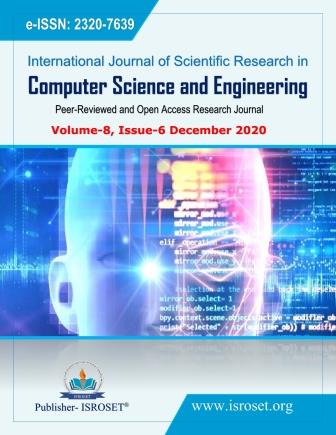Mobile App security for E-Commerce
Keywords:
MAC, SIM card,, NIC, OTP, Cloud database, e-commerce, PIN, Authentication, hybrid algorithmAbstract
Today is an e-commerce world that most of the population around the world does business with high tech. A long the way to deal with it, many intruders, hackers and unauthorized users are trying to involve that business by playing a role as the owner to cash money from a bank or transferring from one account or credit card or use device to install App on mobile phone while the password or PIN was hacked or belonged to those guys illegally. The hybrid algorithm of RSA and OTP will be implemented, that is the best model to prevent those mistreated action that cause to infect to the system. A PIN and a password will be encrypted with the hybrid algorithm. In the world, there is a unique MAC address used for each NIC. The authentication can be processed unless the receiver obtained its own MAC address in advance (pre-shared key). This key (MAC address) was sent to a cloud server after establishing a connection and then while the receiver log in to the cloud, the MAC address will be sent to that receiver to compare with its own MAC address automatically. All MAC is stored in a Cloud Database data must encrypt with the OTP.
References
Karyda, Maria,Mitrou,Lilian “DATA BREACH NOTIFICATION:ISSUES AND CHAL-LENGES FOR SECURITY MANAGEMENT”,10th Mediterranean Conference on Information Systems (MCIS), 2016.
Roland Schlöglhofer, Johannes Sametinger, “Secure and Usable Authentication on Mobile Devices”, Proceedings of the 10th International Conference on Advances in Mobile Computing &multimedia,Bali, 2012.
Khean Ouk, Kimsoung Lim,Sensamnang Ouk, “Message security and Parity bit recovery”, International Journal of Scientific Research in Computer Science and Engineering,Vol.8, Issue.5, pp.01-05,2020.
Downloads
Published
How to Cite
Issue
Section
License

This work is licensed under a Creative Commons Attribution 4.0 International License.
Authors contributing to this journal agree to publish their articles under the Creative Commons Attribution 4.0 International License, allowing third parties to share their work (copy, distribute, transmit) and to adapt it, under the condition that the authors are given credit and that in the event of reuse or distribution, the terms of this license are made clear.







